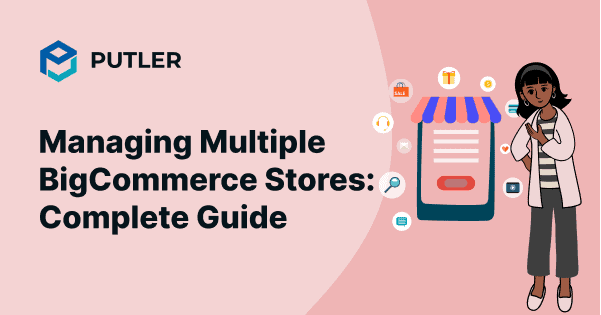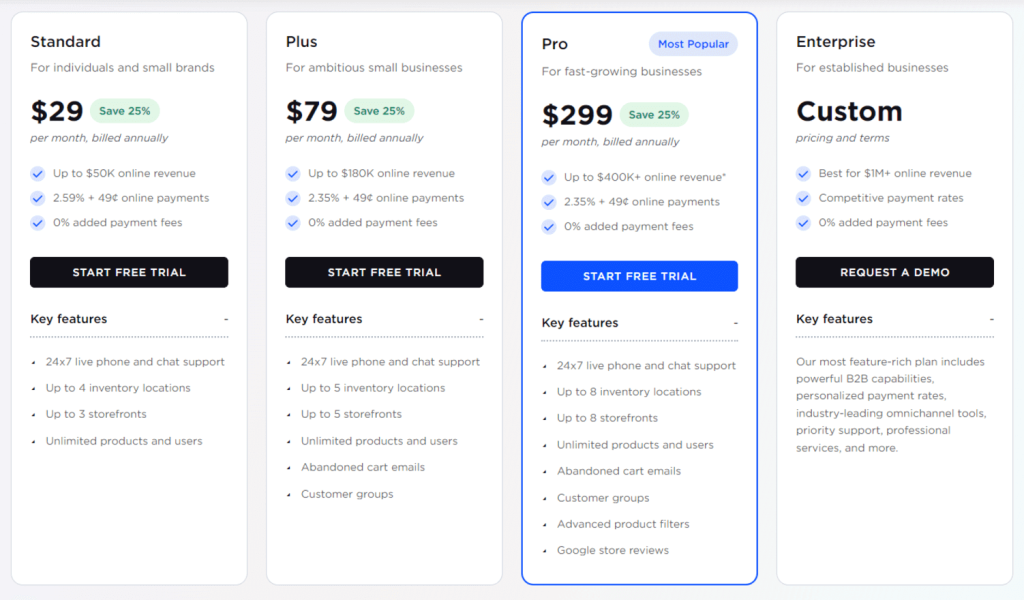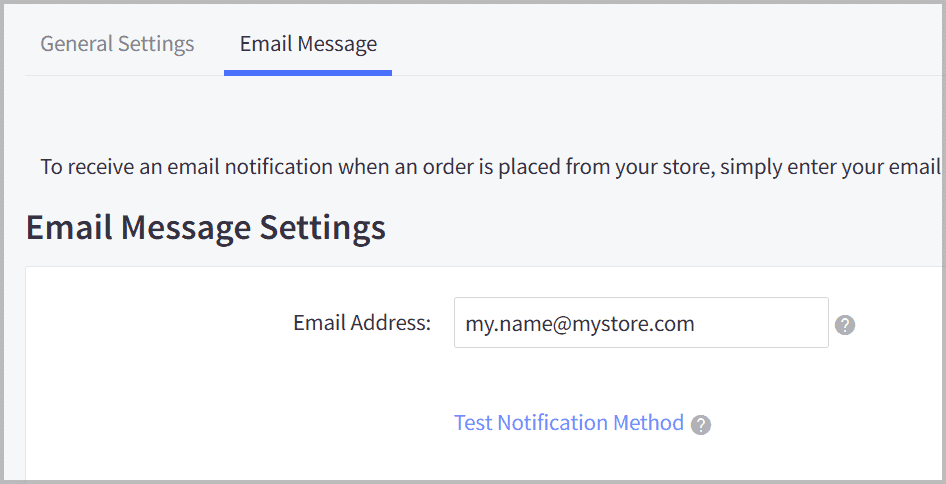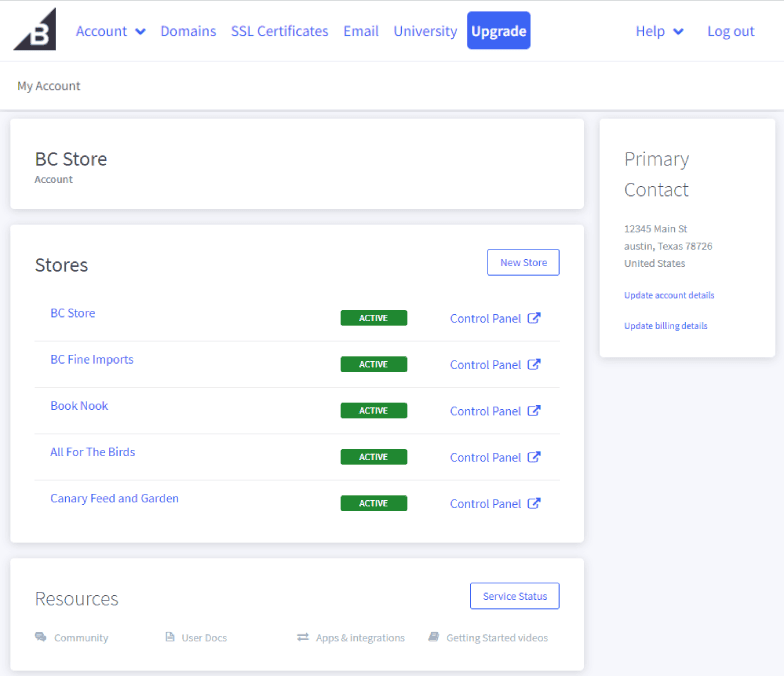For the right kind of online store, there is no end to opportunities. We have already witnessed this in the case of Amazon. Starting as an online book delivery service, this e-Commerce giant is now selling everything online, be it technology, household items, or apparel. With multiple stores and effective management, Amazon managed to soar to unprecedented heights.
If you’re a BigCommerce store owner and dream the same, here is the good news. You can also set up multiple storefronts using one BigCommerce store. Wondering how? Scroll down to know more about it.
Can you have multiple stores on BigCommerce?
Yes, you can have multiple stores on BigCommerce using two ways. First is BigCommerce Multiple Stores and the next is BigCommerce Multi Store Front (MSF).
Interested to learn more about running multiple stores on BigCommerce? Then stick around…
BigCommerce Multiple Stores vs BigCommerce Multi-store front
Firstly, let me explain to you the terms BigCommerce Multiple Stores and BigCommerce Multi-storefront.
They both might sound like synonyms. But in reality they are different.
Let’e see how?
BigCommerce Multiple Stores
This refers to separate BigCommerce store instances, each with:
- Its own admin dashboard
- Separate logins, themes, settings, apps, and billing
- No native connection between the stores
Managing multiple stores meant juggling different backends manually or using third-party integrations.
Challenge: High operational overhead and no centralized control.
Best for: Businesses running entirely separate ventures, or have very different teams handling different businesses, separate stores might still make sense—for now.
BigCommerce MSF (Multi-Storefront)
This is BigCommerce’s native solution (launched in 2021–2022) for running multiple storefronts from a single BigCommerce backend.
Each storefront can:
- Have its own domain, theme, branding, and product selection
- Serve different regions, languages, customer groups, or brands
- Be managed centrally from one admin panel
- Use shared inventory, order management, analytics, etc.
Biggest benefit: Centralized control with flexibility to customize each storefront.
Challenge: Still evolving; not every app/theme is MSF-compatible yet.
Best for: Businesses that are building or scaling within one brand ecosystem, MSF is almost always the better choice. It’s built for flexibility, efficiency, and future growth.
How to Create a BigCommerce Multi-store (using MSF)?
Creating multiple storefronts using BigCommerce’s Multi-Storefront (MSF) feature is simple—even for users without advanced technical skills. However, if you’re aiming to build a scalable and feature-rich multi-store setup, hiring a professional BigCommerce development company can help you unlock custom features and stand out from competitors.
Here’s a step-by-step guide to get started with a multi-storefront strategy on BigCommerce:
- Go to the BigCommerce store setup & create a new store
Start by navigating to the Channel Manager in your BigCommerce dashboard. Click on “Create Channel” to begin setting up a new storefront.
Depending on your BigCommerce subscription plan, you’ll be able to create a limited number of storefronts. If you need more storefronts than your plan allows, you can purchase additional storefront seats. Once you have the necessary seats, click “Create a New Store” to add a new storefront.
- Fill in the details for the new BigCommerce store
Next, you’ll need to enter key details for the new storefront. Once created, the storefront will appear under the Storefront section of your Channel Manager. You can configure:
- Store Name
- Currency Settings
- Logo and Branding Assets
- Custom Domain (optional)
BigCommerce MSF also supports headless commerce. You can integrate headless storefronts using BigCommerce’s APIs or available connector applications.
- Choose Themes or Templates for Each Storefront
BigCommerce provides a shared theme library accessible across all storefronts. You can:
- Use a pre-purchased theme
- Build a custom theme for each storefront
- Edit existing themes using the Theme Editor or Page Builder
To explore options, go to Storefront > Themes > Manage Themes. You can also browse the Theme Marketplace to apply new designs suited to each brand or region.
- Customize Each Storefront for Its Target Audience
After selecting a theme, tailor each storefront to suit its target audience. Add relevant products, homepage banners, social links, and other custom pages to complete the storefront.
While BigCommerce offers intuitive customization tools, more advanced tweaks may require help from BigCommerce experts or developers.
- Repeat the steps to create additional BigCommerce stores
If you need more storefronts later, just repeat the above process. BigCommerce makes it easy to manage multiple stores from a single dashboard. You can also enhance functionality by integrating third-party apps tailored for multi-store management.
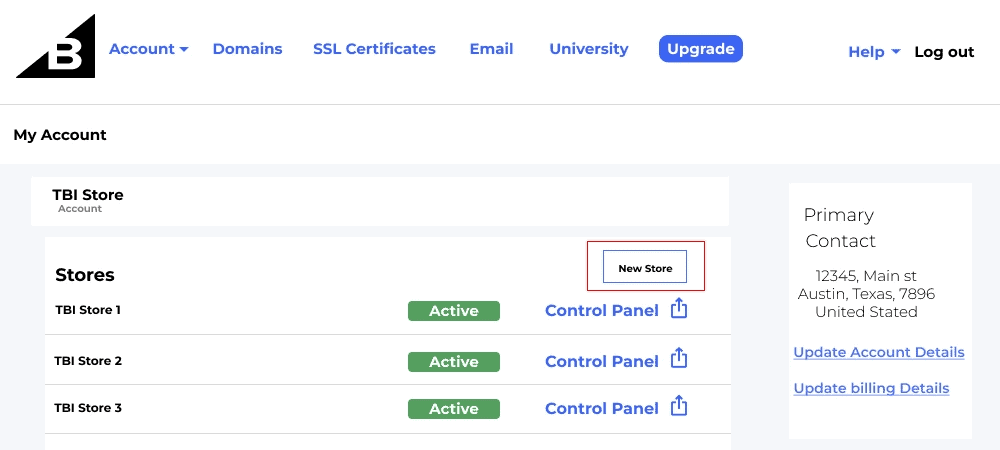
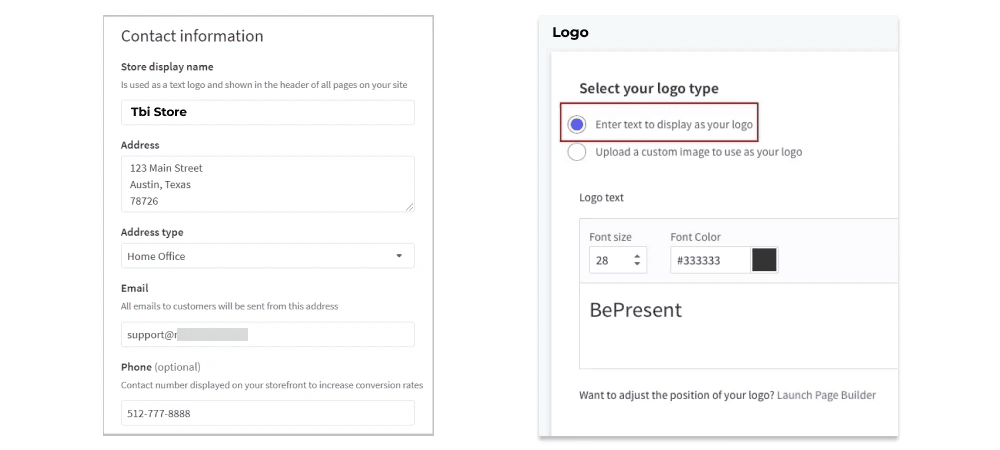
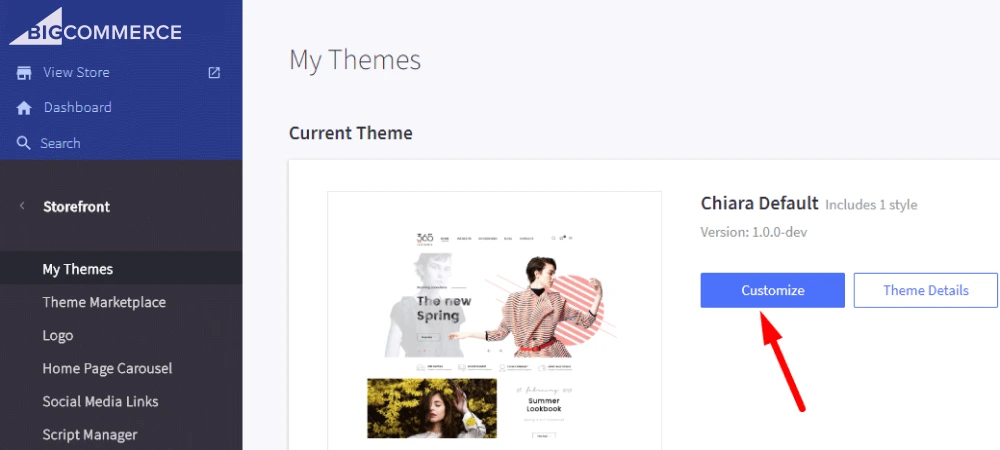
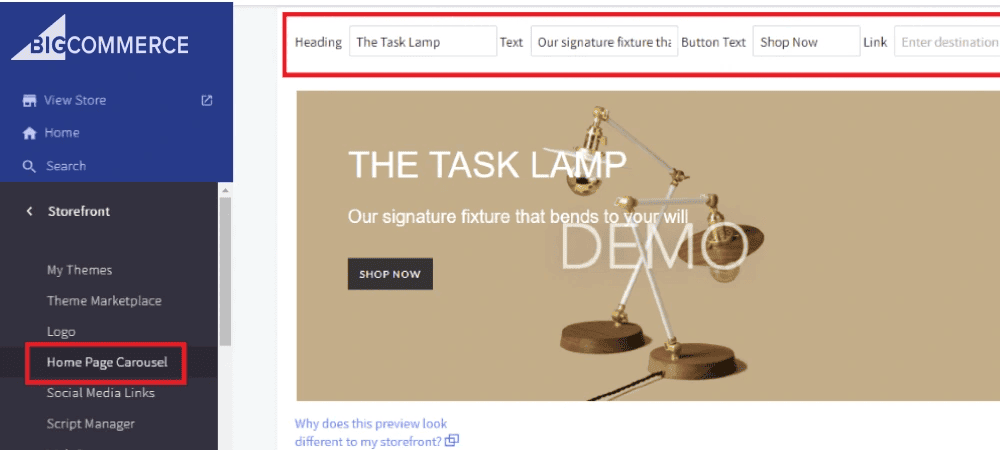
How to create multiple stores in BigCommerce (without using MSF)?
While BigCommerce MSF is a definite way to create multiple stores in BigCommerce. But what if you want to create completely separate stores? In that case, you need to follow these steps:
-
Sign Up for a New Store
- Go to bigcommerce.com and click
“Start Your Free Trial”. - Use a different email address for each store, or aliases (e.g., yourname+store1@gmail.com).
- Each store will be treated as a new account.
- Go to bigcommerce.com and click
-
Choose Your Plan
- Select the appropriate plan (Standard, Plus, Pro, or Enterprise) based on each store’s needs.
- Plans are managed individually per store.
-
Set Up Each Store’s Basics
- Add store name, logo, branding
- Configure:
- Currency
- Tax rules
- Shipping zones
- Payment methods
- Storefront design/theme
-
Add Products and Categories
- You can add products manually or import via CSV or API.
- If stores share inventory, you’ll need a third-party inventory sync tool (e.g., SKUlabs, Ordoro, etc.)
-
Set Up Custom Domains
- Point each store to its own domain (e.g., store1.com, store2.com)
- You’ll configure DNS settings through your domain registrar (like GoDaddy, Namecheap, etc.)
-
Configure Email, Orders & Notifications
- Set up email notifications, customer order flows, and store-specific rules.
- You’ll need to do this separately for each store.
- Install Apps or Integrations (Optional)
- Each store has its own app environment.
- If you’re using tools like Mailchimp, Google Analytics, or a CRM, integrate them per store.
- Manage Stores Independently
- Each store has a separate admin login, dashboard, billing, and analytics.
- You’ll have to switch between them manually.
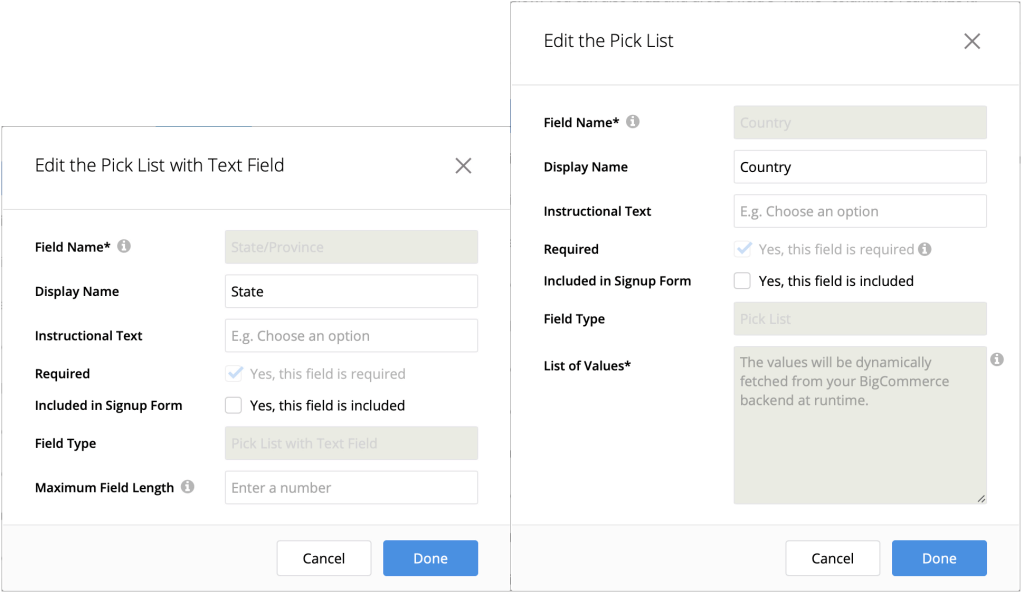
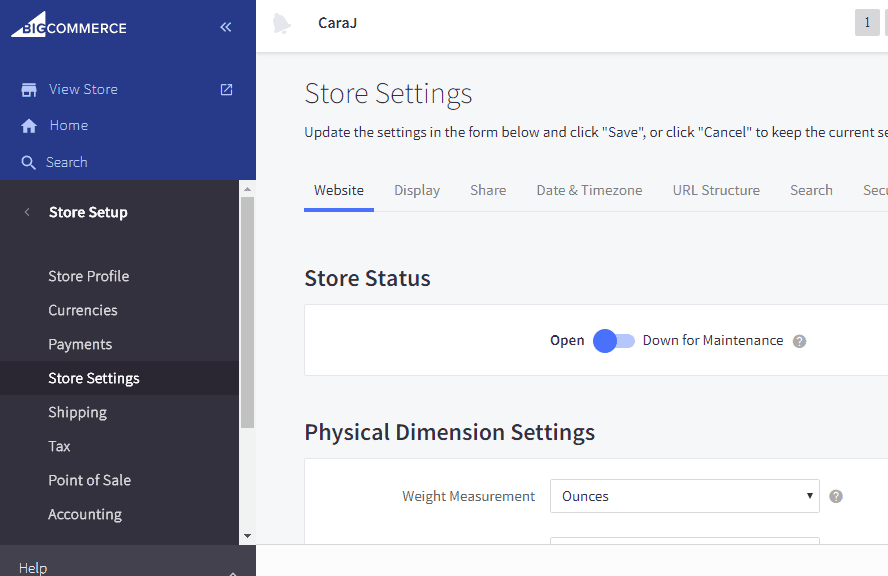
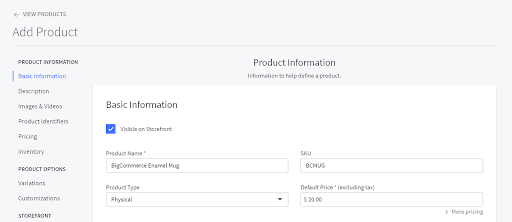
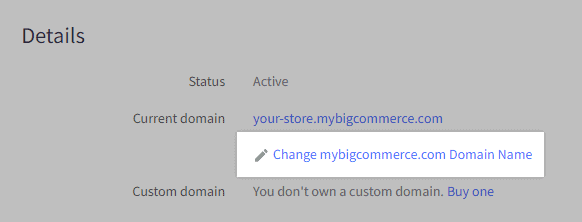
Advantages of having BigCommerce multiple stores
However you choose to create multiple BigCommerce stores (either with MSF or not), it has multiple advantages.
Here’s a look at the key advantages that come along with this practice.
- Improve Customer Experience
With multiple stores, you allow your customers to have a chance to get everything they need over one platform. They don’t have to switch platforms for different needs. - Globalization ability
With multiple BigCommerce stores, it’s possible to have availability at different locations. e-Commerce retailers aiming at the global market will be able to make it happen by setting BigCommerce multiple stores with different currency, payment gateways, and time zone compatibility is possible. - Exploring new markets
With multiple stores, you have to cater to different markets and find out which one provides more optimized facilities. - Multi-brand stores
You can have more than one multi-brand store under one key store. This is a great opportunity for online stores seeking more selling opportunities. - Improve SEO
BigCommerce multiple store pages will allow store owners to rank multiple location pages using the same search query as pages are on different forms. It improves the SEO ranking and makes the store more optimized. - Scalability
If you’re a global brand seeking a global presence, it’s possible with multiple BigCommerce stores. Such stores can set up location-based online stores and scale the store easily. - Cost-effectiveness
Instead of owning different stores for different locations with different subscriptions. BigCommerce multiple stores make it happen with one subscription. Hence, more savings are on your way.
Disadvantages of having BigCommerce multiple stores
Despite the multiple and impressive benefits, this functionality isn’t unblemished. Here are some obvious drawbacks that one might experience with many BigCommerce stores.
- Difficulty in updating information
The more stores you have to manage, the more data/information you will have. Handling, updating, and managing such a huge pile of data isn’t an easy job. It can become a tedious job for many. - Duplicate catalog and content
BigCommerce multiple store reporting demands separate report generation for different stores. There is no unified data processing. This often causes data duplication in catalogs and content. - Expensive
Even though the feature sets you free from the need to pay a different subscription fee for different stores, it’s still a costly affair. It’s only available for Enterprise plan subscribers at a customized cost, which is not very economical – considering that the PRO plan is priced at $299.95/month. - Data Management
For the same reason, data abundance, and data management becomes tough for everyone. It takes a lot of effort to sort, filter, and analyze the data. - Multi-store marketing
Even if you get rid of having different owner accounts for many BigCommerce stores, you still have to have a distinct marketing strategy. This is too much hard work to do.
However, all these drawbacks can be resolved without any headaches by consulting BigCommerce development services. But if you wish to have a DIY approach, let’s discuss some apps that could help.
How to monitor BigCommerce multiple stores in a single place?
Sadly, BigCommerce’s multiple storefronts doesn’t provide a unified way to track the data and monitor the performance of the distinct store.
However, you can take the help of third-party apps and tools that gather all store-wise data, analyze it, and present you in a crisp and understandable form via Dashboard. There are many such apps offered. They are plug-and-play tools with great functionalities.
Apps for Managing BigCommerce Multiple Stores
Apart from the BigCommerce plan restrictions, BigCommerce MSF has its own set of challenges:
- Theme management can get messy — juggling multiple themes from one backend isn’t always smooth.
- App compatibility is hit-or-miss — many third-party apps don’t yet support storefront-level separation.
- Limited storefront-specific analytics — built-in reports don’t break down performance by storefront.
- Catalog assignments are tedious — managing product visibility and pricing across storefronts adds friction.
- Checkout customization is unified — you can’t tailor checkout experiences per storefront (yet).
- Admin UX has a learning curve — MSF adds complexity that can confuse newer users.
- Requires some dev or support help — not all MSF features are self-serve or intuitive.
- Plan limits apply — full MSF power usually requires an Enterprise plan or negotiation.
So keeping all these drawbacks in mind, here are some third party alternatives which might help:
Multiorders
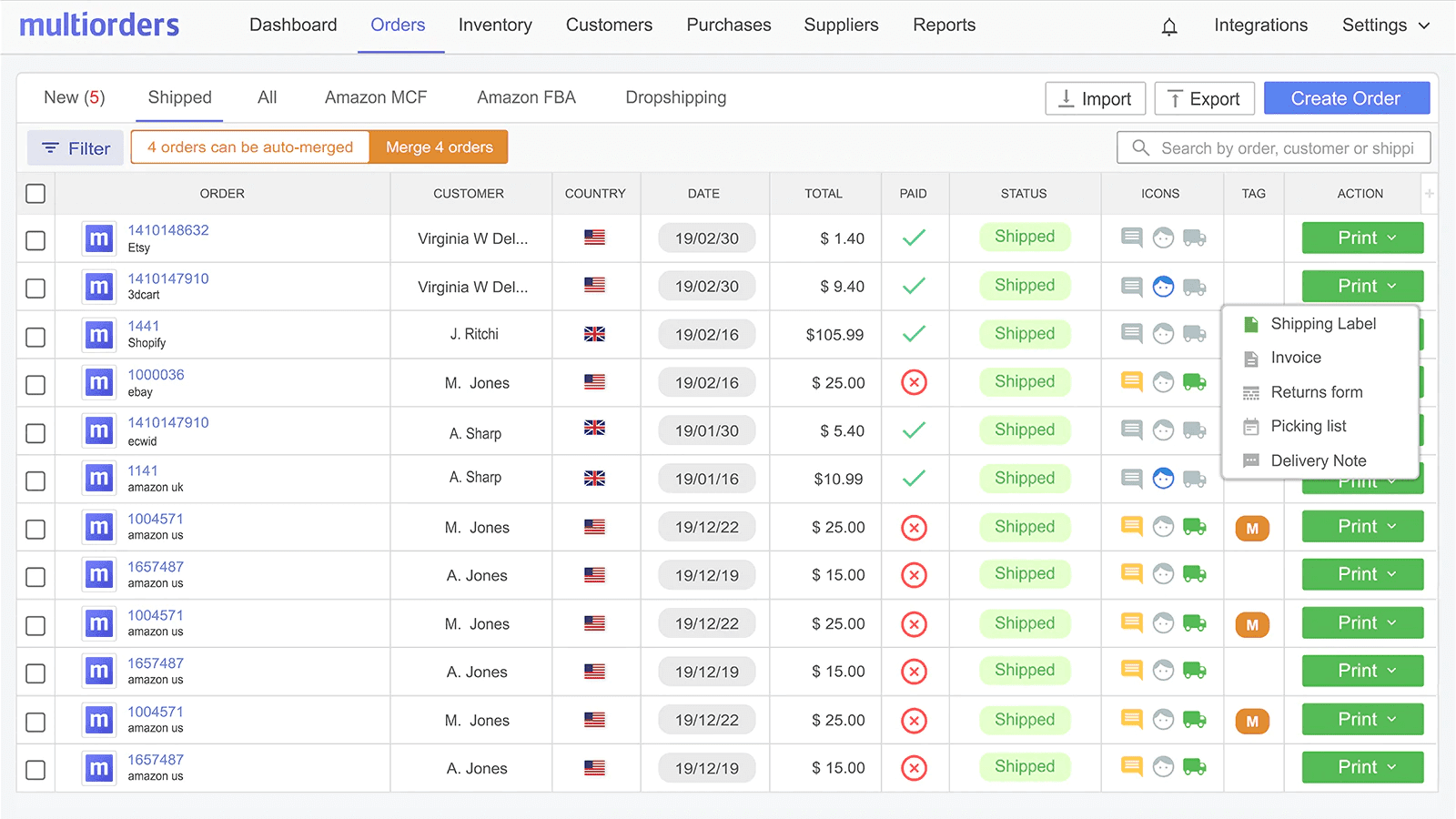
Multiorders is an advanced BigCommerce store management tool that can automate sales, reporting, orders, and inventory in one go. It features an intuitive dashboard to keep you updated with the data from all these platforms.
It brings all your BigCommerce-based marketplaces to one platform, automates the data capture process, and creates data-driven reports. All in all, it’s worth a try if you seek accurate and real-time BigCommerce multi-store management.
Putler
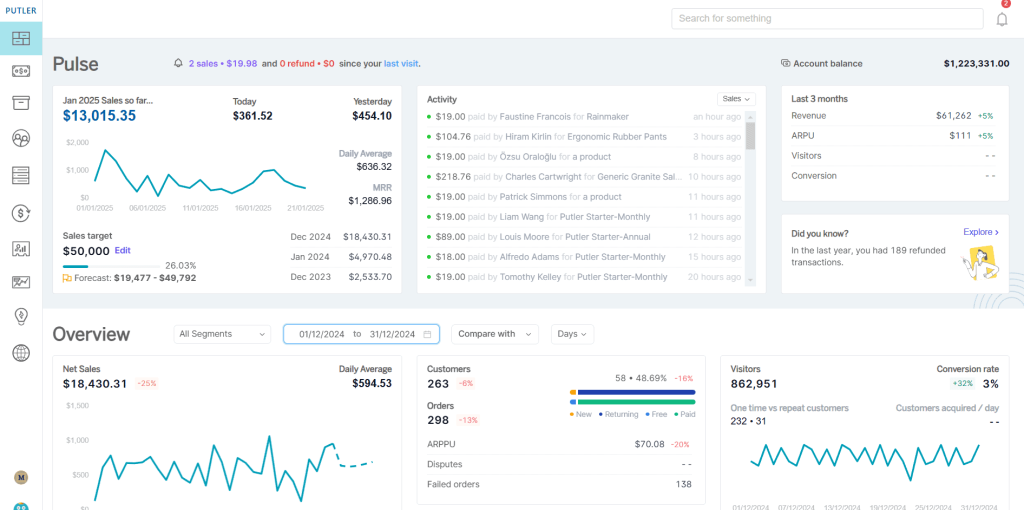
Putler helps monitor multiple BigCommerce stores from a single place. Using Putler, you get both the views:
- Unified view: View stats from all your multiple BigCommerce stores in one place.
- Independent view: Suppose you wish to see stats from independent BigCommerce stores separately, Putler lets you setup that easily. You can easily toggle between all views as per your needs.
Apart from centralized monitoring from a single place, Putler also provides some enhanced analytics and insights for BigCommerce stores. Explore Putler.
SKULabs
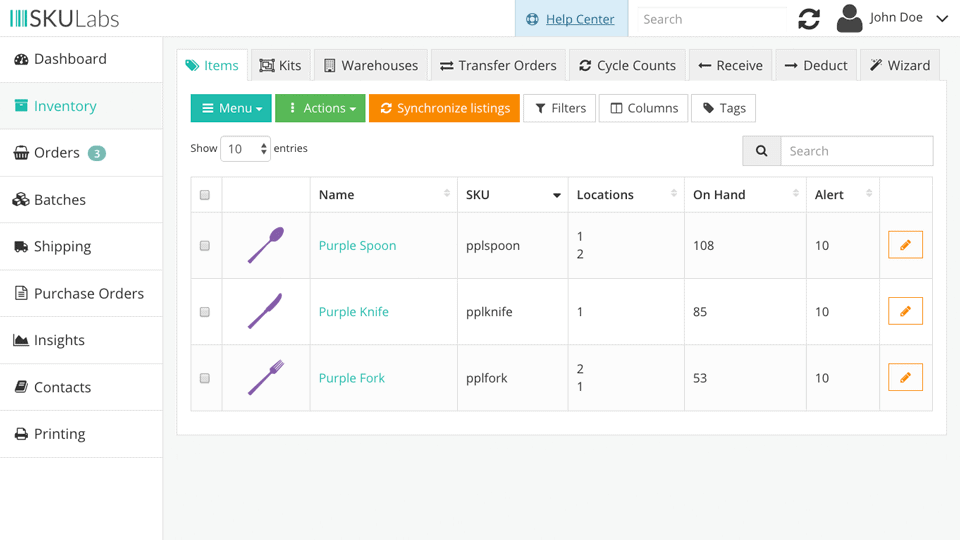
Trusted by many online stores, SKULabs is a highly advanced multiple store order and inventory management tool that can do real-time data tracking. It lets you compare the shipping rate for all of your stores and select the best one. For all your stores, you can even create labels in one go. Its accuracy is something to vouch for.
Why Putler is the Best Tool for BigCommerce Multi-Store Management
While all the above tools have their pros and cons. In this article, I will explain what makes Putler a must-have for every BigCommerce store owners that owns multiple BigCommerce stores.
Putler is here to fix the problem of lack of aggregated data accuracy while handling multiple store data. BigCommerce multiple store reporting asks for separate store data capture and analysis, which is too much extra work. Putler, using the advanced AI and algorithm, connects all the data and makes reporting easy. That’s not the only perk you enjoy as its prestigious customers. There are many.
All your BigCommerce stores in one place
Whether you own two BigCommerce stores or many, Putler will bring all of them to one place. Its intuitive dashboard presents a crisp overview of all your BigCommerce stores. You can even create separate folders for the different data types. Basically, everything remains sorted.
Data filtering
You can even set the filters to refine the search a bit more. Data can be filtered based on customer role, location, store type, data resource, and many more.
Explore the advanced filters within Putler.
Quick search
There is a quick search facility offered by Putler. Powered by responsive AI, this search feature will help you access desired data from the extensive database.
Personalized insights based on data
Putler is capable of capturing interesting insights like lost customers, recurring customers, customers on the verge of churn, product trends, best time to sell, best upsells and many more. When it comes to knowing the customer in a better way, you have the help of name, email, addresses, and many more details captured in real-time. It effortlessly integrates with Google Analytics and captures data from multiple resources as well.
Handles multiple time zones, currencies
Do you have multiple BigCommerce stores operational in different time zones and currencies? Don’t fret. Putler is capable of doing real-time currency conversion and creating dedicated support for all kinds of payment gateways. The currency conversion is quick and accurate.
Conclusion
It seems a great idea to have multiple BigCommerce stores as it expands revenue capabilities. However, their management is tedious. With an advanced multi-store management tool like Putler, it’s possible to have a unified data exchange platform for all your BigCommerce multi-stores. It can capture data related to orders, CRM, and many more with full accuracy. With its aid, online retailers can dream big and effectively manage multiple BigCommerce stores.
FAQs
Can I have multiple stores on BigCommerce?
Yes, you can. There are two ways – BigCommerce MSF and the other BigCommerce Multiple Stores. BigCommerce MSF is when you wish to create and control all your multiple stores from one single BigCommerce account. And the BigCommerce Multiple Stores is when you want to create separate BigCommerce Stores that have no connection with each other.
How many stores can you have on BigCommerce?
One can create only 5 native storefronts of 15 headless storefronts with one BigCommerce store. Even if the number is not too much, management of these stores is itself a challenge to overcome.
Can I manage two stores using one account?
Yes, you can entirely manage two or more BigCommerce stores using a single account. The prime aim of the Multiple Storefront feature of BigCommerce is to have a unified identity for all the stores so that management becomes easier than before.
Can I create multiple storefronts on BigCommerce?
Yes, using the Enterprise plan, you can create multiple storefronts from a single BigCommerce account with the MSF feature.
- BigCommerce Vs Shopify
- 20 Best BigCommerce Apps in 2025
- BigCommerce Review (2025) — Key Pros and Cons of a Leading Store Builder
- 20 Awesome Examples of BigCommerce Websites To Inspire Your Ecommerce Store
